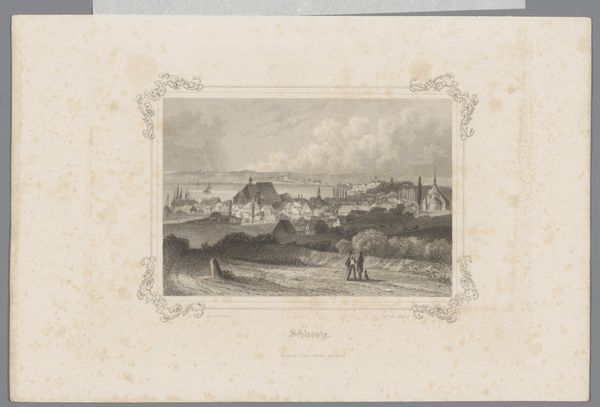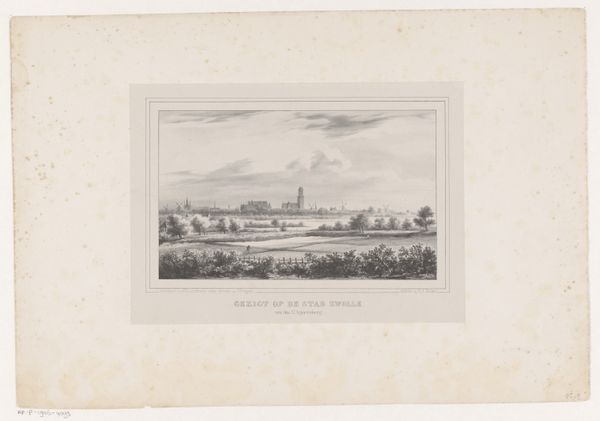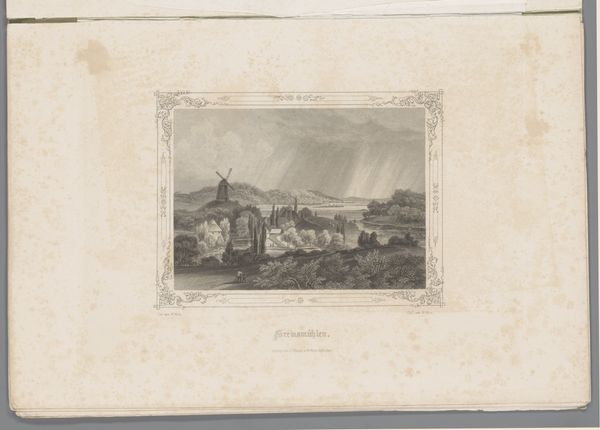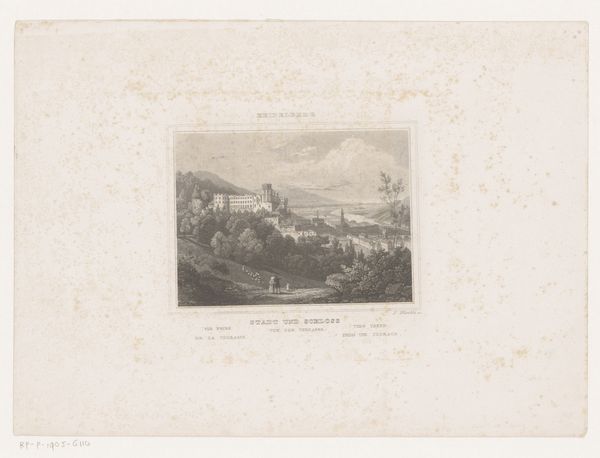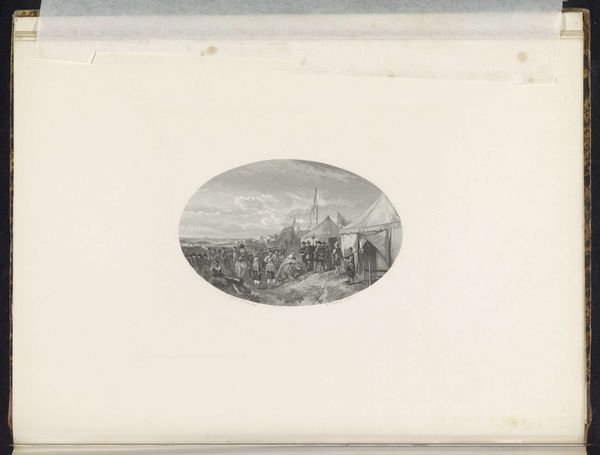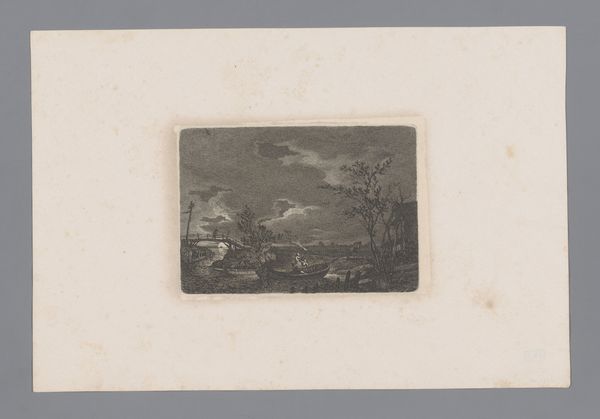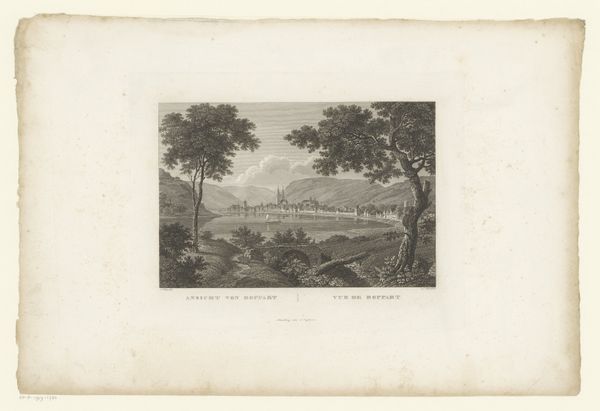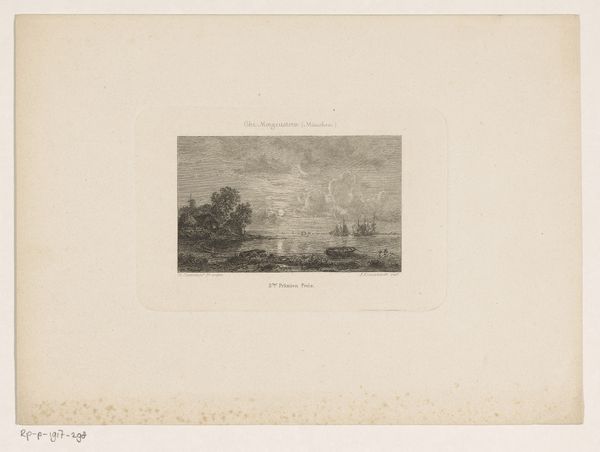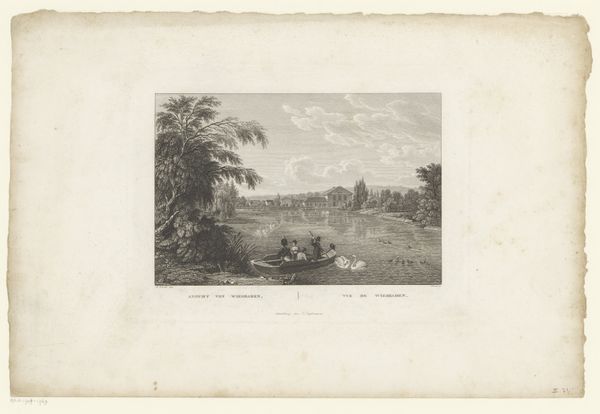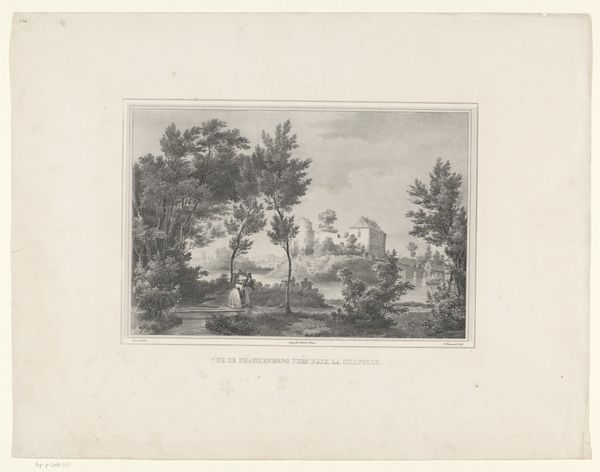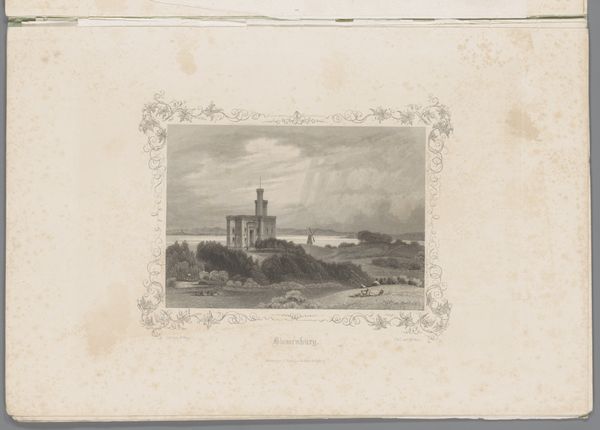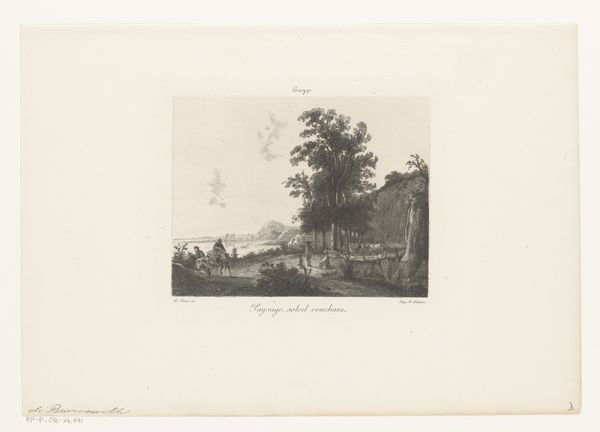
print, etching, engraving
# print
#
etching
#
landscape
#
coloured pencil
#
cityscape
#
engraving
Dimensions: height 191 mm, width 145 mm
Copyright: Rijks Museum: Open Domain
Georg Michael Kurz created this view of Itzehoe using etching, a printmaking technique, sometime in the mid-19th century. The image starts as a metal plate, usually copper or zinc. The surface is coated with a waxy, acid-resistant substance called a ground, and the artist then draws through this ground with a sharp needle, exposing the metal underneath. Next, the plate is immersed in acid, which bites into the exposed lines. The longer the plate sits in the acid, the deeper and wider the etched lines become. This determines how much ink they will hold. Once the etching is complete, the plate is inked, and then wiped clean, leaving ink only in the etched lines. Damp paper is then pressed against the plate, transferring the ink to create the final print. The resulting image displays incredible detail and texture, a testament to Kurz’s technical skill and labor. By emphasizing the careful, time-consuming processes involved in printmaking, we can appreciate the skill required, challenging any perceived hierarchy between so-called fine art and craft.
Comments
No comments
Be the first to comment and join the conversation on the ultimate creative platform.

